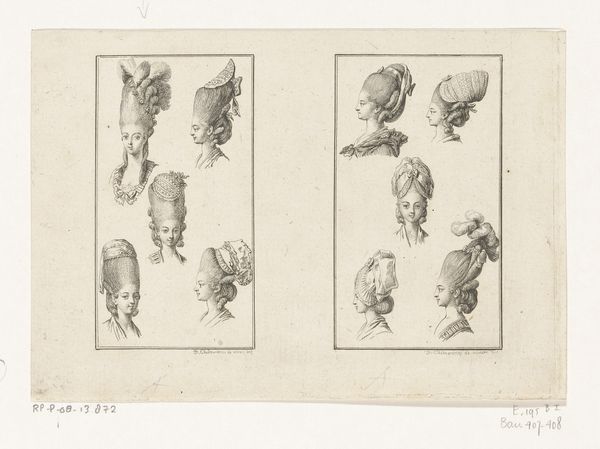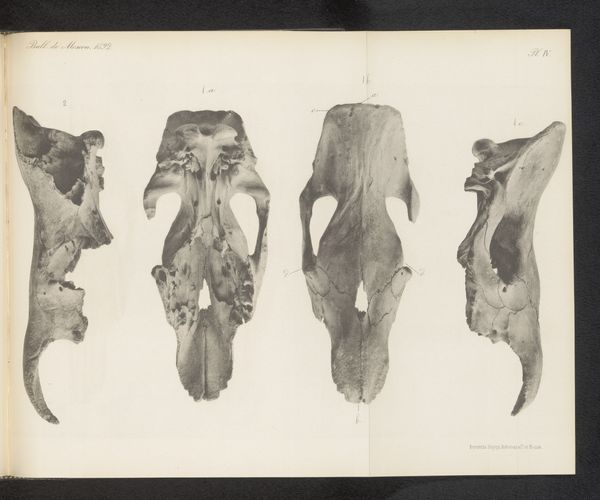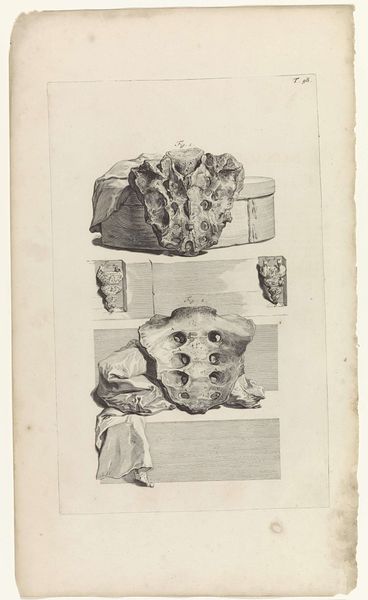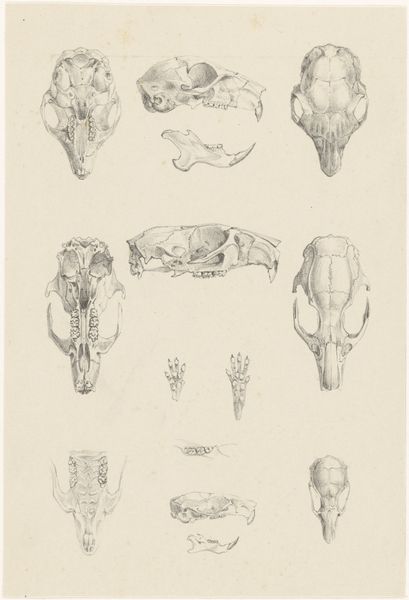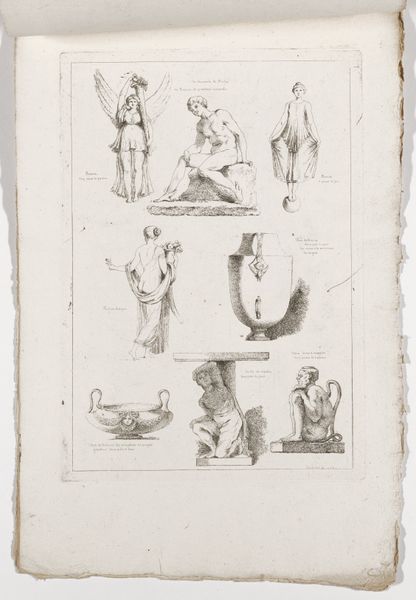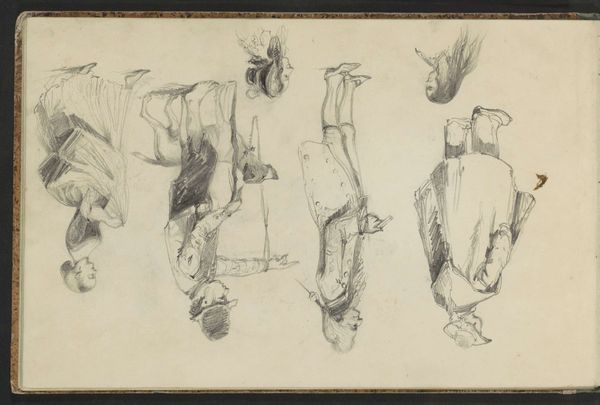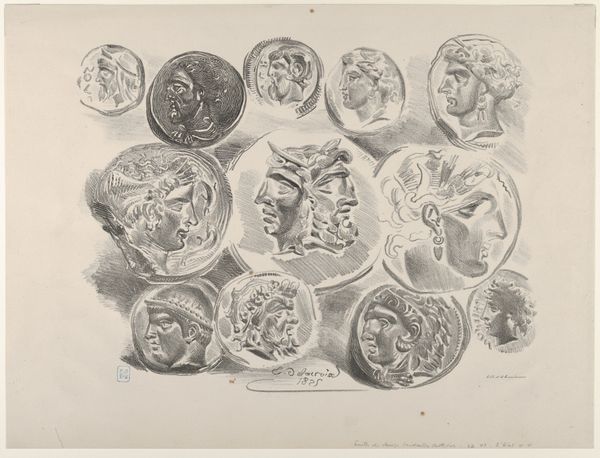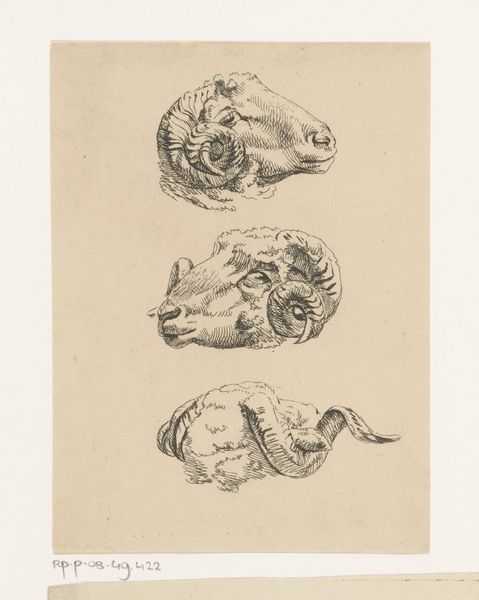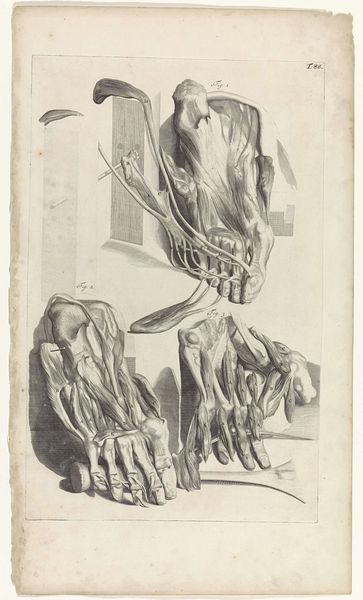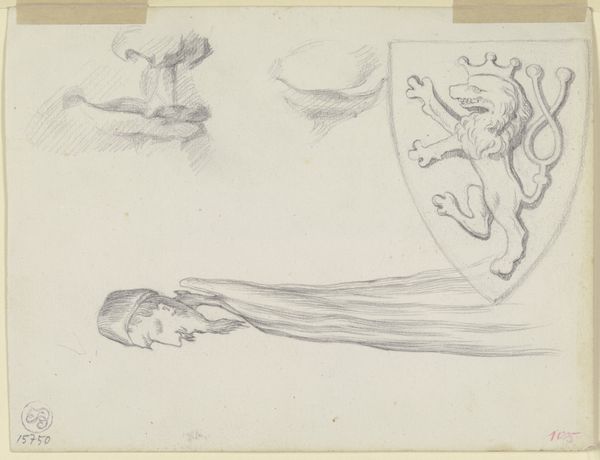
drawing, print, pencil
#
pencil drawn
#
drawing
# print
#
pencil sketch
#
human-figures
#
greek-and-roman-art
#
geometric
#
pencil
#
history-painting
#
coin
#
profile
Dimensions: Image: 10 3/8 x 7 7/8 in. (26.4 x 20 cm) Sheet: 13 1/8 x 10 1/4 in. (33.3 x 26 cm)
Copyright: Public Domain
Curator: This drawing, "Studies of Six Greek Coins" by Eugène Delacroix, created in 1825, presents a collection of ancient coins rendered in pencil. The artwork is currently housed at the Metropolitan Museum of Art. Editor: My immediate reaction is a fascination with Delacroix's evident respect for the craftsmanship evident in these coins. They speak to a deep cultural legacy. There's almost a yearning in the detailed recreations. Curator: Indeed, consider the production—the material transformation involved in both the original coins and Delacroix's act of translation. Think about the source of graphite used for his pencils, or the types of paper then manufactured. The whole thing has so many points of tangible connection to resources, production and distribution. Editor: Right, and Delacroix making this around 1825 implicates the piece within the burgeoning colonial desire to understand the classical world—to lay claim to it, perhaps. Who gets to tell the stories embedded in these coins? The visual language speaks to power and the legacy of empire, doesn't it? Curator: The detail that Delacroix brings forth is remarkable; even a seemingly simple act like hatching provides us insight into material qualities of the surface. Notice how the application is denser in shadowed regions creating almost a three dimensional version of them through labor and time spent applying those marks. Editor: And isn't it powerful how he's chosen to spotlight coins portraying mythical creatures and leaders, icons central to identity, commerce, and mythos? The very act of reproducing them as studies elevates these images, assigning them significance, sparking us to ponder: What do these figures say about ancient culture and power? Curator: He uses very common, simple material and readily available modes of circulation—printed images— to engage the social value, and question high/low art delineations, while making what might otherwise only be held and distributed amongst the social elite available on some small scale to other people and makers. Editor: This dialogue between the ancient and the modern forces us to consider issues of representation and power even today. This simple image contains such a complex layering of artistic processes that challenge conventional understanding of drawing in relation to social frameworks. It reminds us to reflect not only on the legacy but our role in carrying the weight of history into future contexts.
Comments
No comments
Be the first to comment and join the conversation on the ultimate creative platform.
